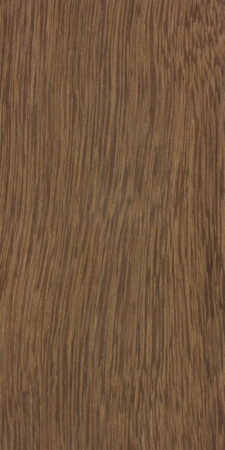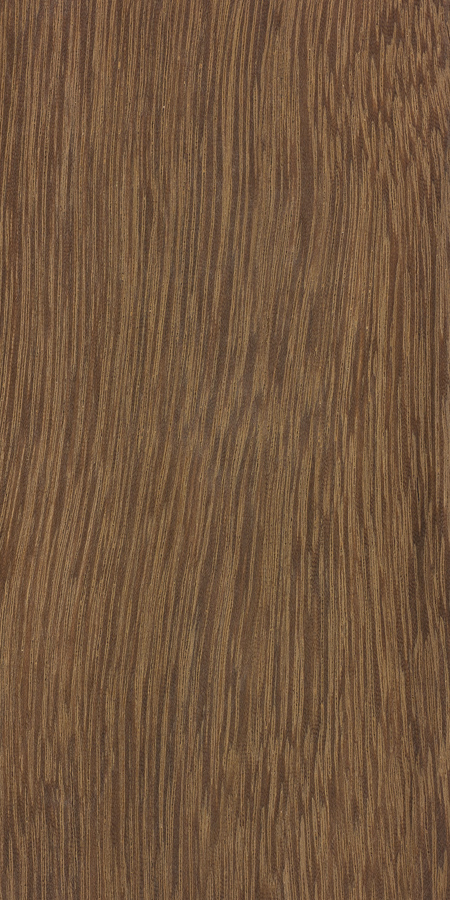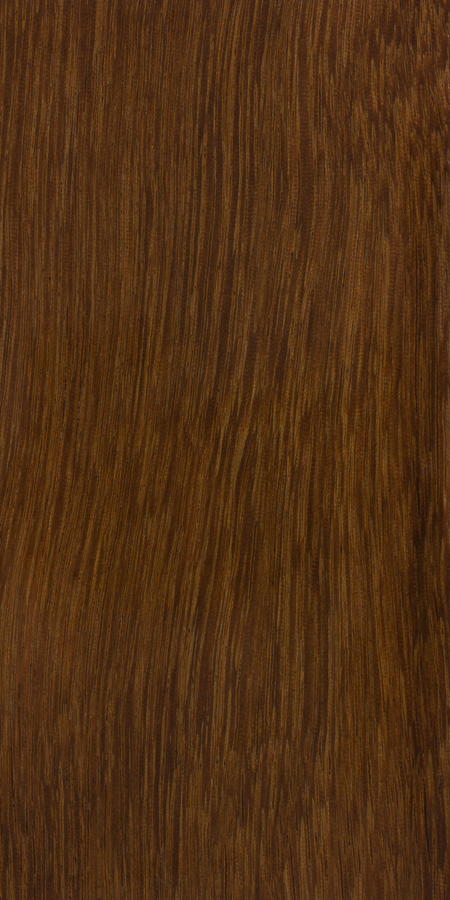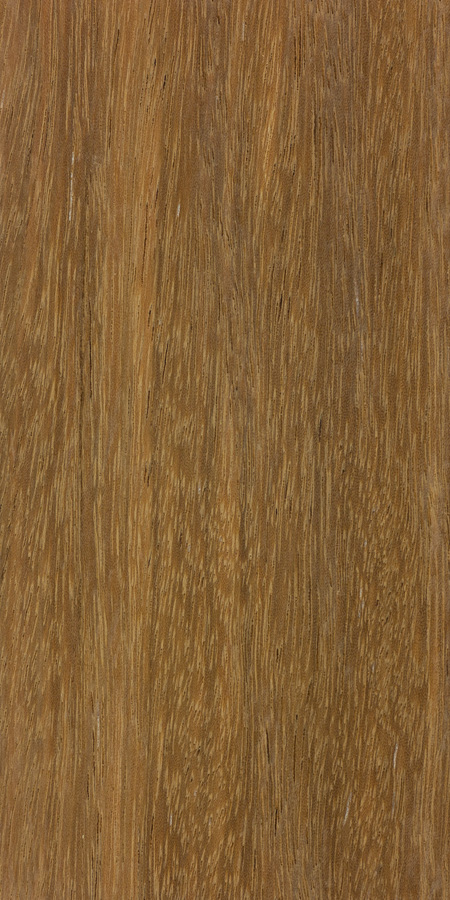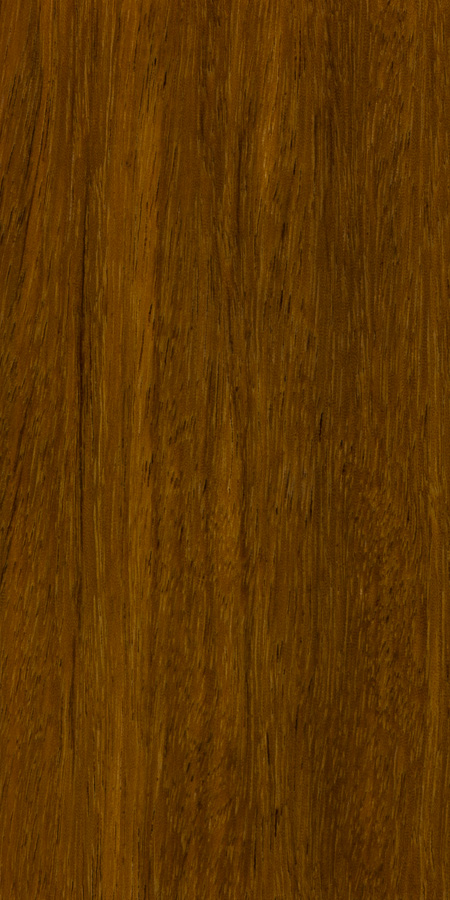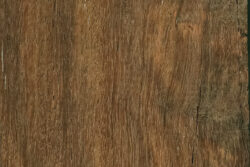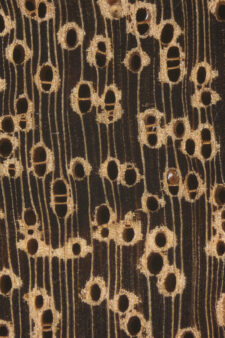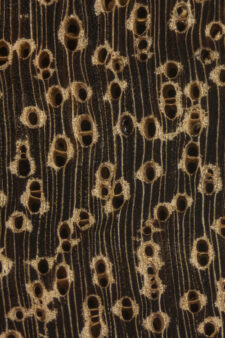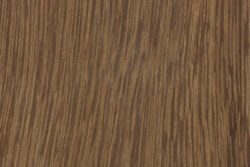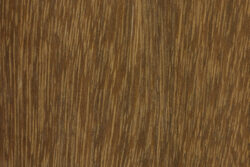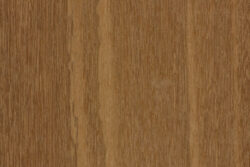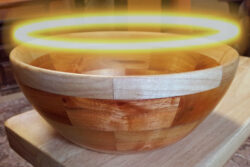Common Name(s): Sucupira, black sucupira
Scientific Name: Bowdichia spp.
Distribution: South America
Tree Size: 100-150 ft (30-46 m) tall,
3-4 ft (1-1.2 m) trunk diameter
Average Dried Weight: 57.3 lbs/ft3 (920 kg/m3)
Specific Gravity (Basic, 12% MC): .76, .92
Janka Hardness: 3060 lbf (13610 N)
Modulus of Rupture: 23560 lbf/in2 (162.5 MPa)
Elastic Modulus: 2603000 lbf/in2 (18.0 GPa)
Crushing Strength: 12550 lbf/in2 (86.5 MPa)
Shrinkage: Radial: 5.3%, Tangential: 8.1%,
Volumetric: 14.2%, T/R Ratio: 1.5
Color/Appearance: Heartwood ranges from medium brown to darker reddish brown. The paler sapwood is usually well demarcated from the heartwood. Contrasting parenchyma bands can give the grain a striped appearance similar to partidgewood (Andira inermis)—though usually less pronounced.
Grain/Texture: Grain is irregular, usually wavy and/or interlocked. Medium to coarse texture and low natural luster.
Rot Resistance: Rated as very durable, with good insect resistance.
Workability: Generally difficult to work due to its high density and irregular grain. Good nail and screw holding, though pre-boring is necessary.
Odor: No characteristic odor.
Allergies/Toxicity: Although severe reactions are quite uncommon, sucupira has been reported to cause skin irritation. See the articles Wood Allergies and Toxicity and Wood Dust Safety for more information.
Pricing/Availability: Commonly imported as flooring planks, the wood is also sometimes available as surfaced lumber. Expect prices to be moderate for an imported hardwood.
Sustainability: This wood species is not listed in the CITES Appendices, and is reported by the IUCN as being a species of least concern.
Common Uses: Flooring, furniture, turned objects, and veneer, as well as heavy exterior construction applications not requiring much machining, such as railroad ties, bridges, and beams.
Comments: This wood is sometimes sold by flooring dealers as Tiete or Brazilian chestnut, a misleading name as the wood isn’t related to true chestnuts in the Castanea genus (which are actually quite soft and generally unsuitable for flooring).
Another very closely related wood that sometimes also bears the name sucupira is tatabu (Diplotropis purpurea). Despite being from two different genera, the two woods are very similar and are sometimes represented interchangeably (e.g., CIRAD’s Tropix project).
Images: Drag the slider up/down to toggle between raw and finished wood.
(The first sample pictured is Bowdichia nitida, and the second is B. virgilioides.)
Identification: See the article on Hardwood Anatomy for definitions of endgrain features.
Porosity: diffuse porous
Arrangement: some pores are exclusively solitary, but radial multiples of two to three pores are much more widespread
Vessels: large to very large, few to very few; brown deposits occasionally present
Parenchyma: diffuse-in-aggregates, vasicentric, winged, lozenge, and confluent
Rays: narrow to medium width; normal spacing
Lookalikes/Substitutes: Brownheart (Vouacapoua americana) and partridgewood (Andira inermis) are two other South American hardwoods with similar density and appearance. Separating them from sucupira can be difficult, but in general, these woods will have much more widespread confluent parenchyma throughout most of the pores, while sucupira will, on average, have a more conservative amount of confluent parenchyma.
Notes: Tatabu (Diplotropis purpurea) is a closely related species with nearly identical properties. Given the available macroscopic features, there aren’t enough consistently unique elements to reliably distinguish between the species of Diplotropis and Bowdichia.
The Bowdichia genus contains only two recognized species, B. nitida and B. virgilioides, both of which are represented here on this page. However, two very closely related genera are Diplotropis and Leptolobium, whose circumscription is still in revision based on genetic testing.[1]Cardoso, D., de Lima, H. C., Rodrigues, R. S., de Queiroz, L. P., Pennington, R. T., & Lavin, M. (2012). The Bowdichia clade of Genistoid legumes: Phylogenetic analysis of combined molecular and … Continue reading
Related Content:
References[+]
| ↑1 | Cardoso, D., de Lima, H. C., Rodrigues, R. S., de Queiroz, L. P., Pennington, R. T., & Lavin, M. (2012). The Bowdichia clade of Genistoid legumes: Phylogenetic analysis of combined molecular and morphological data and a recircumscription of Diplotropis. Taxon, 61(5), 1074-1087. |
|---|

